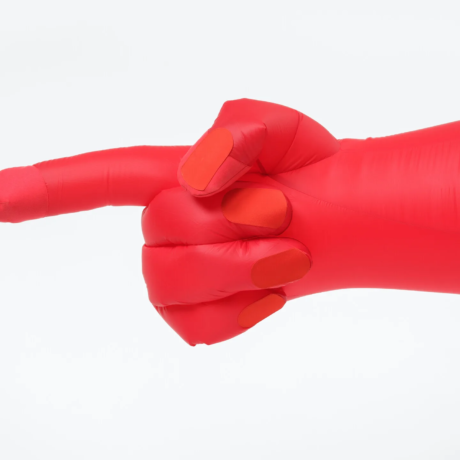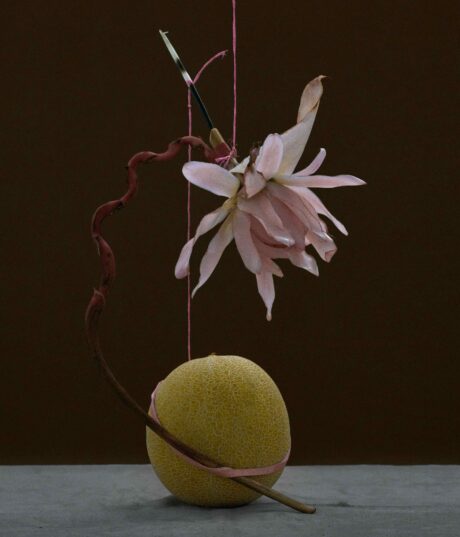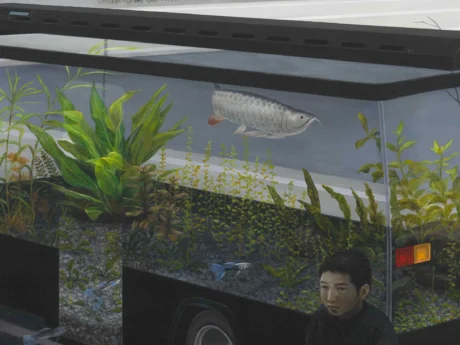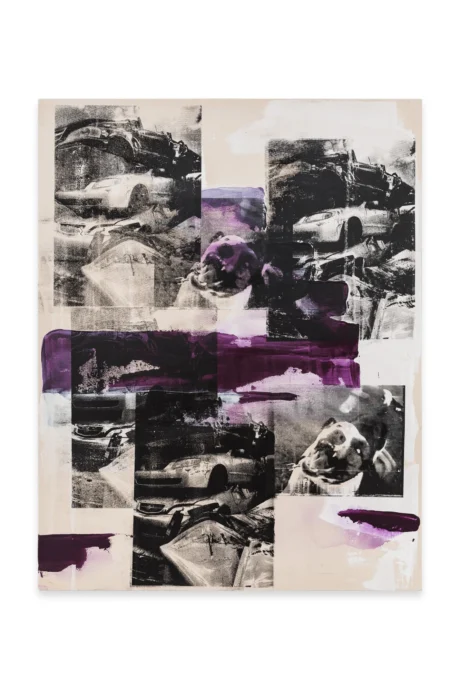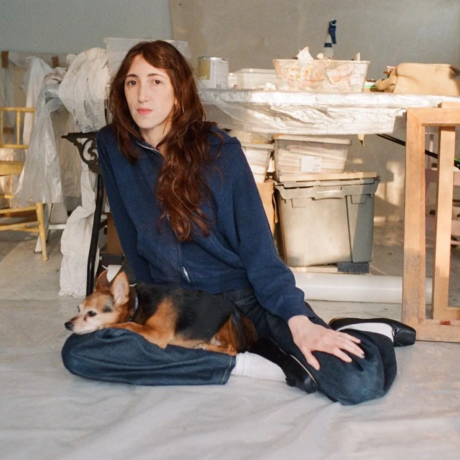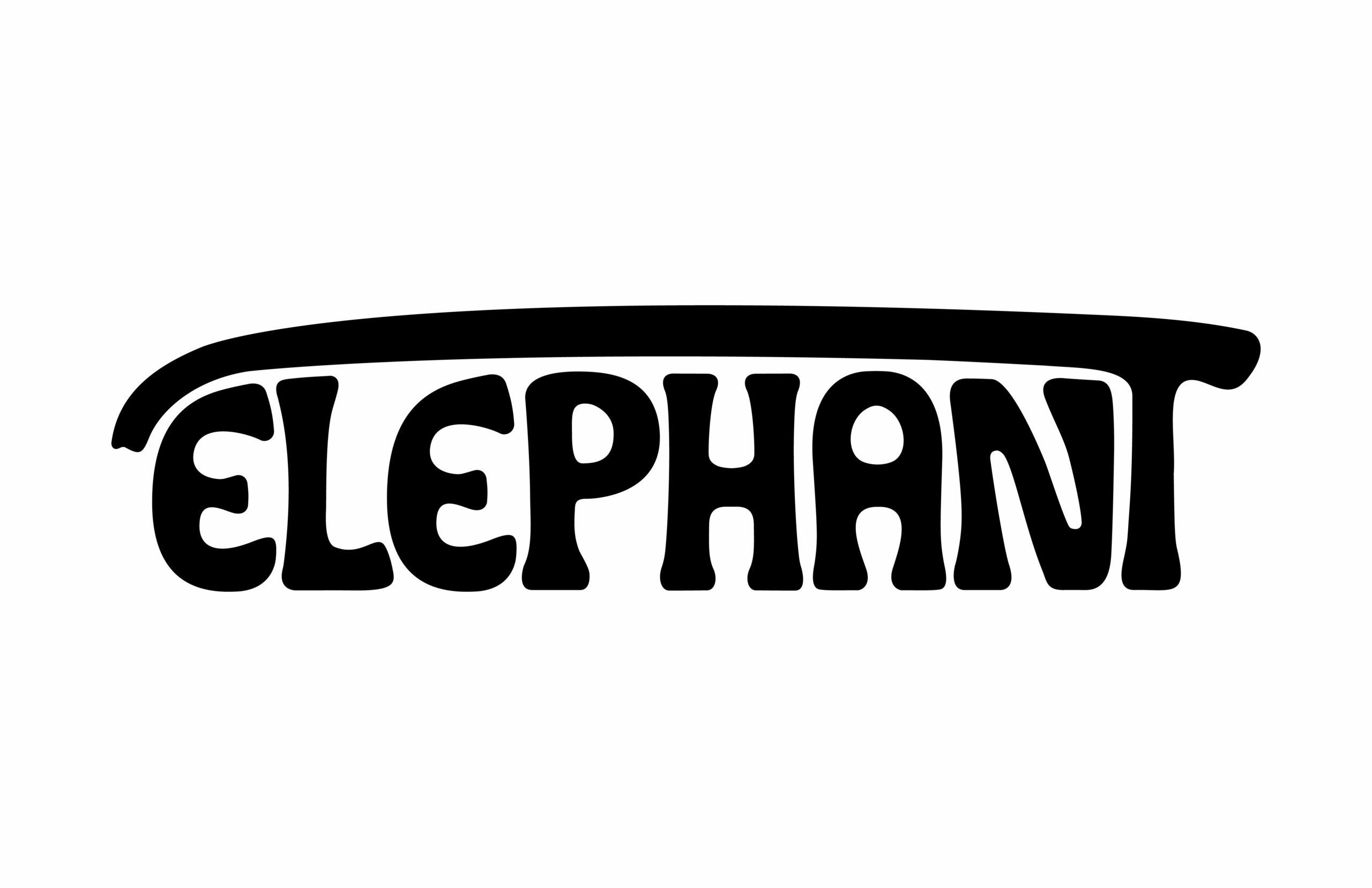Reframe is a monthly column in which contributor Sam Falb discusses timely openings to view in New York. Each edition offers commentary on the latest exhibitions, performances, and installations. Dynamic and ever-evolving, the content reflects the fluidity of the market it travels through.
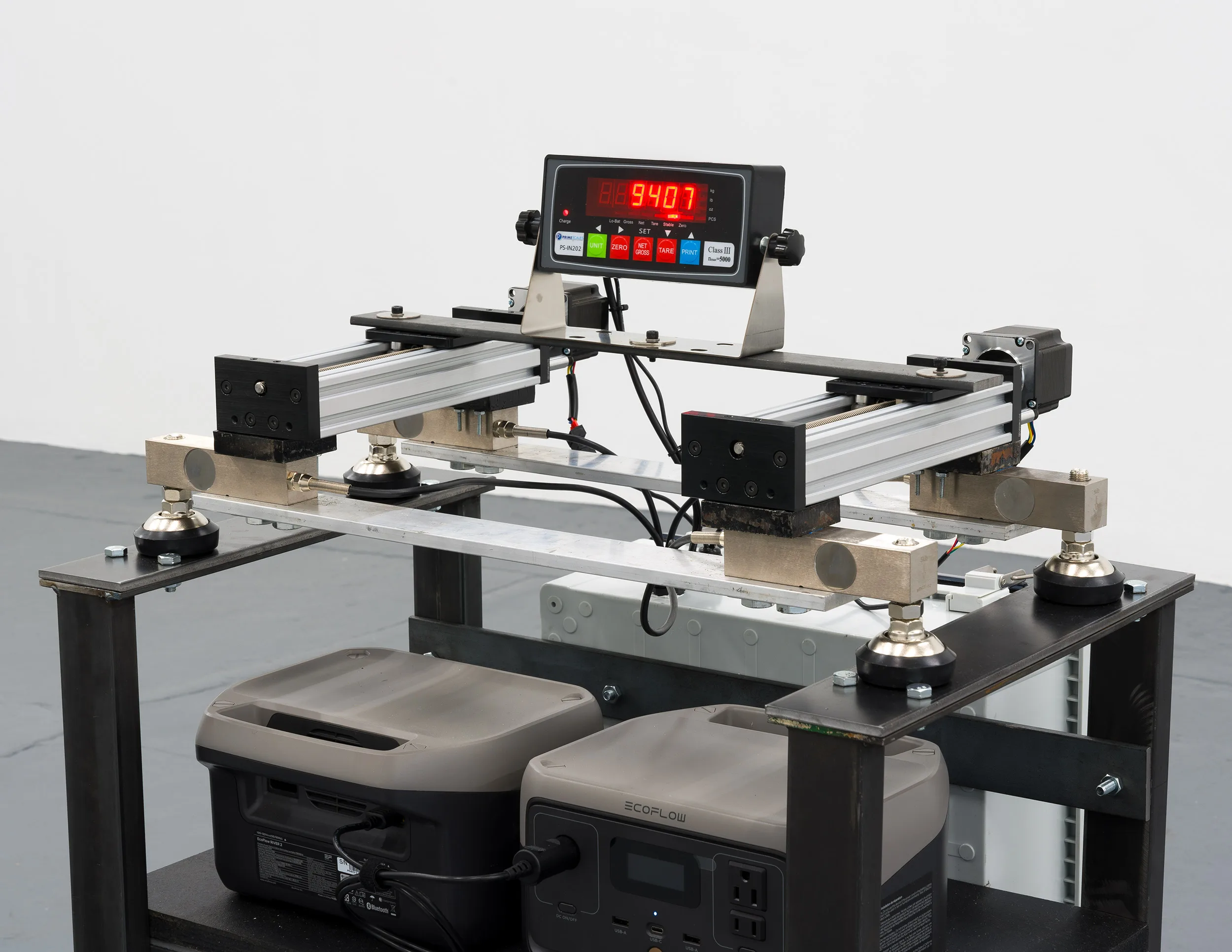
Welcome back – this month’s edition reads much like a downtown gallery walk, with our guest recommender saving us from this exclusive title (more from Lauren below). While many will soon be spreading their wings toward Zona Maco and Frieze LA, New York’s galleries continue to launch their own storytelling endeavors across an array of compelling shows. From a garage door installation featuring worm-eaten wood to a truly perplexing, life-size rabbit sculpture, no medium or technique is too novel for you, reader. Down a flight of stairs on Hester Street, a NAFTA-oriented show meets the moment of politics in-extremis. Over on Walker Street and up an elevator (past the previously-covered TIWA Select and Kapp Kapp), a symphony of skulls and vixen-forward characters can be found. Raw, textured experimentation meets polished poise this month, setting up salons of thinking, questioning, and marveling throughout this period.
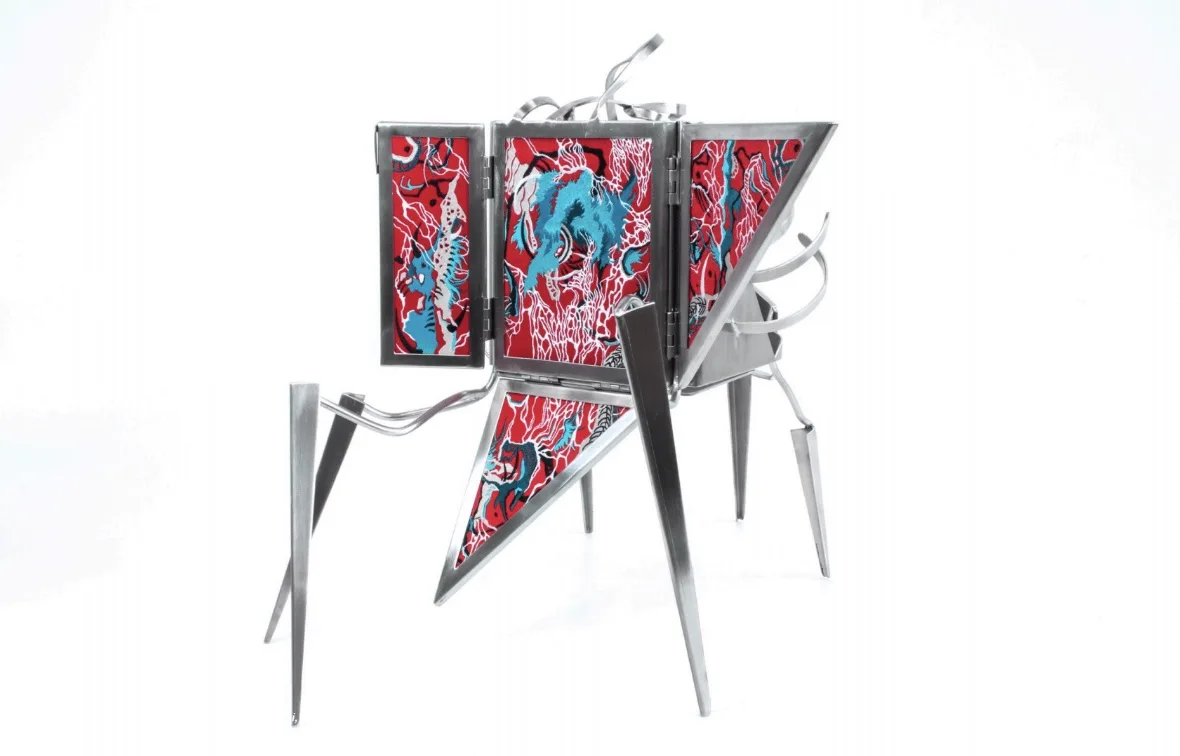
Swivel Gallery: Interspecies (February 25th – April 22nd)
Coming up at the end of the month, Elisa Carollo presents a dynamic thought experiment of the ever-blurring boundary between the human and the technological. In a three-person exhibition featuring Camilla Alberti, Anastasia Komar and Bai Yiyi, each consider a future symbiosis between digital and organic forms. After this writer first came into contact with Komar at Silver Art Projects’ open studio, her work especially stands out for its piercing, metallic tentacles resting over acrylic-painted canvases in soft hues of blue, pink, and purple. Per exhibition notes on the presentation at-large: “By blending advanced science and technology with ancestral knowledge and imagination, the artists in the show force a relevant reflection and reconsideration of bodies, industrial relics, and all relationships with the non-human through their contemporary mythopoetic practice.” The notion of the abstract is further complicated in Yiyi’s work –artificial white splashes, a twinkling eye, scaly shadows, and a color palette of both natural-looking and beautifully synthetic tints mark canvases. Alberti’s work reflects on the environment of living species, situating a lichen in an anhydrobiotic state alongside a steel and computerized embroidery form, for example. A suspended creature traipses across an artificial savannah of industrial embroidery made of felt, in another piece. Carollo’s strategy in this exhibition seems to thread distinct yet interconnected practices into a speculative ecosystem—one where organic and synthetic materials engage in a fluid dialogue elevating the succinct message of living, breathing technology.
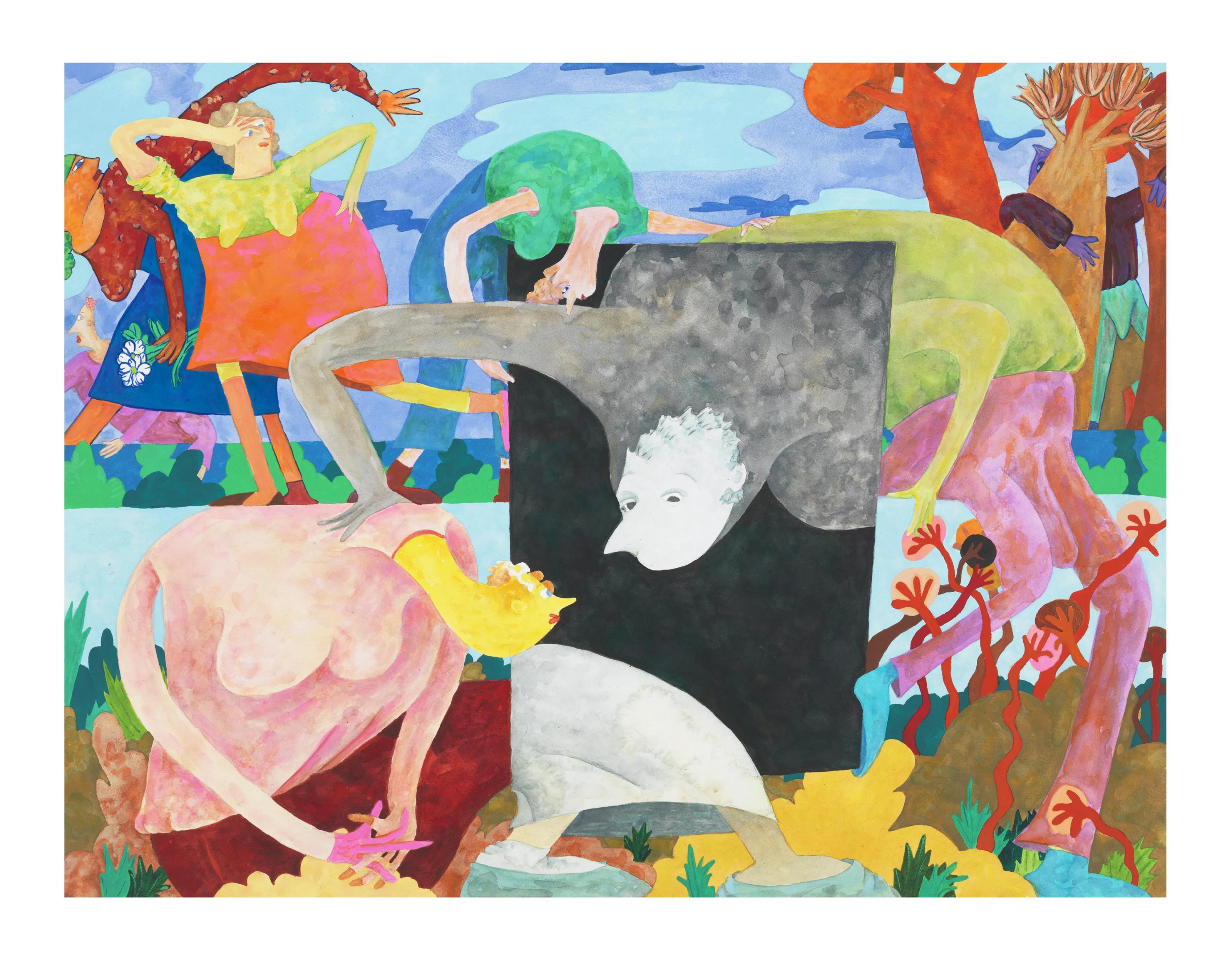
Post Times: Bride of The Far Side (January 30-March 9)
A toothsome, tusked boar provides a watchful eye for guests at this show, before handing off viewers to its peer (life-size) bunny sculpture sat on a log in the middle of the gallery. The “Far Side” of this group exhibition’s title is a world of whimsical creatures it seems, bow-tied and all. Not to be outdone, Al Freeman’s Soft Camels stands tall on the wall opposite the entrance. It’s sumptuously plush in vinyl texture with a polyfil interior. The great Bonnie Lucas lends Some Girls’ jewel-encrusted bird to the display of flora and fauna as well, while Adrianne Rubenstein’s Yellow Sky suggests an abstract tableau of sky featuring its own darkly brooding bird on the top of the canvas. The gallery is alive with Rainen Knecht’s curatorial vision, a world carefully constructed from gestures of playfulness and nostalgia, wildness and refinement. Knecht’s selections call forth a dreamlike bestiary, inviting viewers to consider what lies beyond the immediate—what happens on the Far Side of perception and memory. For deeper insight, look to Morgan Ritter’s poetic meditation, which lingers over the show like a riddle: “She’s making a world from work and play / of junkyard archival salad education / Throwing goop into the heat until it burns through the questions.” A fitting reflection for an exhibition that revels in the absurd, the tactile, and the tenderly strange.
Long Story Short: Bliss Point (January 24 – March 9)
Guests will be richly rewarded for entering the doorway of Long Story Short, where, once inside, glowing orbs of tactical, painterly poise await. Take a dip into “the smooth precision of airbrushed acrylics and the textured imperfections of hand-applied oil and dry pastels,” as the gallery shares about Maciej Kość’s solo show. This is not hard to do, it must be admitted, given the highly masterful manipulation of light – from glowing spheres to deepest shadow – that Kość illustrates across the works. The artist takes heady inspiration from various components of the natural world. Pearls, in the conventional white as well as in red and yellow make an appearance, as do a variety of expressive birds carrying the orbs in beak, claw, or against far-off twinkling moonlight. Currently pursuing an MA at the Royal College of Art in London, it’s curious to wonder how the artist’s practice might evolve yet again through targeted study, whether through an even greater refinement of his luminous technique or a deepened conceptual engagement with recurring motifs. Kość’s meticulous attention to surface—where painting meets the weightlessness of airbrushed light—suggests an artist in constant negotiation between control and chance, precision and expression.
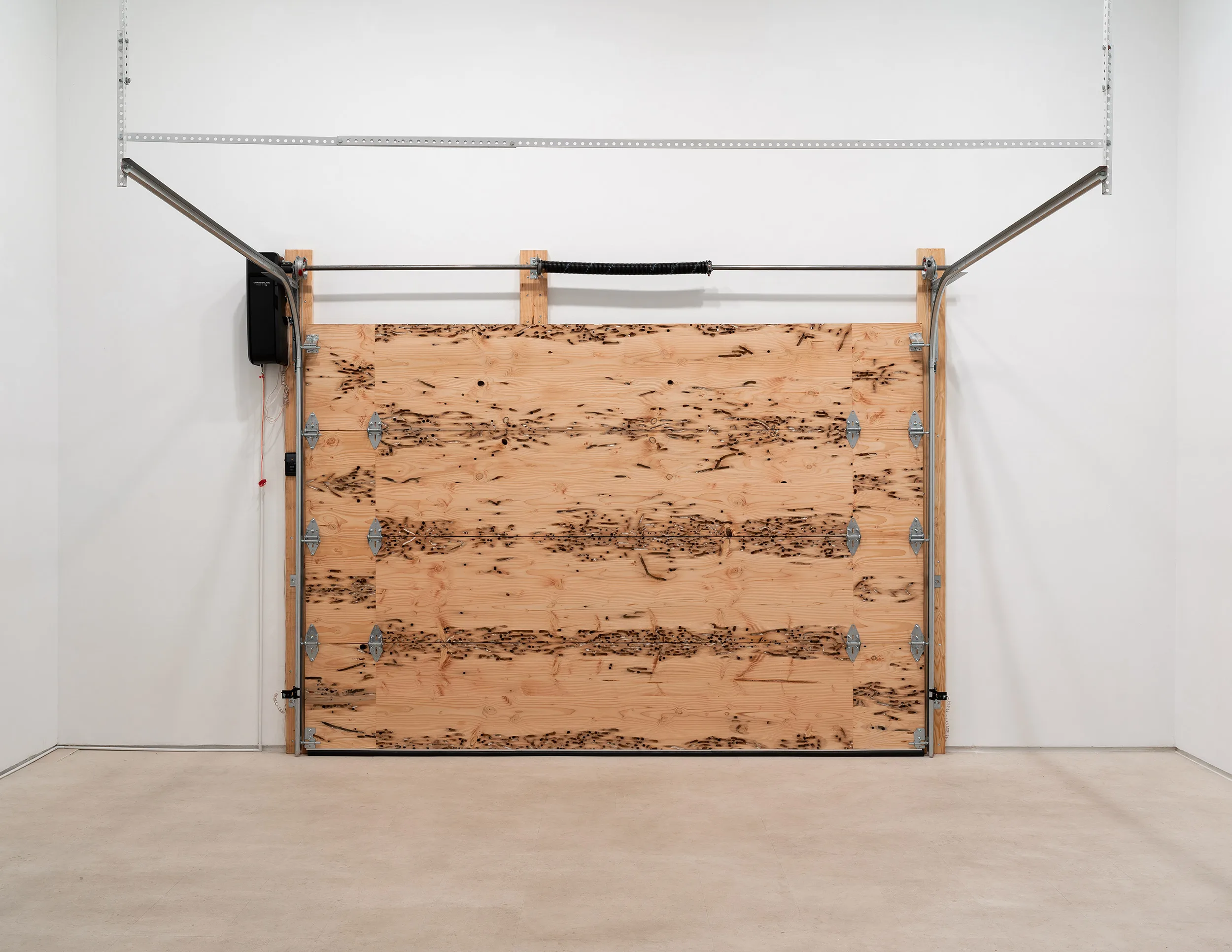
Miguel Abreu: Class: Weight (January 24 – March 8)
The first thing you might see upon entering Miguel Abreu’s Orchard Street outpost is the abrupt rising of Flint Jamison’s garage door in the high-ceiling space. The loud, grating noise is complemented by the steady hums of a vintage stereo playing an excerpt from Haroun Farocki’s film, Still Life, an audio recording of a Cartier watch photoshoot (with a binder of Cartier advertisements – Ultimate Office AdjustaView 10 – Pocket Desk Reference Organizer – available to flip through not far from the set-up). Installed by a Long-Island based operator, the garage scenario has played out to a steady stream of buzz and industry-aligned acclaim, seeing visitors from the world of garages, fans of the artist, and curious passersby alike stopping in to view the decidedly unorthodox installation. It features a particular type of found wood in the Puget Sound where Jamison currently lives. Watchful eyes will notice slivers of Purple Heart Wood complimenting the stereo set-up and small gaps in the garage door’s frame. Head not far to their Eldridge Street space for some more worm-munched wood works, as well as a variety of splayed cables, linear actuators and servo motors elevating and dropping wooden planks in quick-time, as well as two delightful collections of mounted letterpress prints (Scope 1 1 Is and Masterworks on Loan) unable to be opened, but piquing this writer’s interest for what lies behind the thickly-stacked pages.
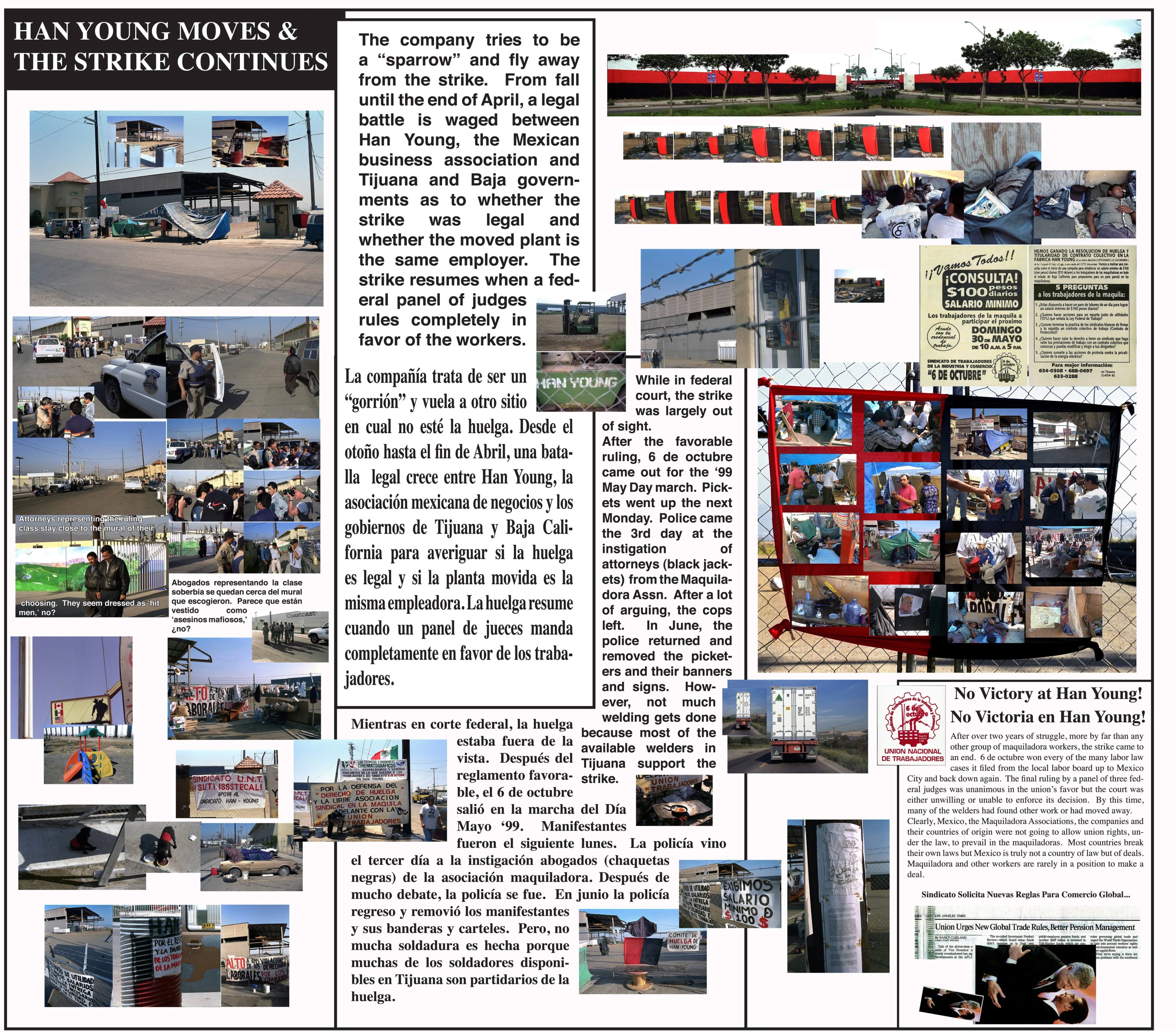
Maxwell Graham Gallery: N.A.F.T.A. (Not A Fair Trade for All) (January 22 – March 1)
Fred Lonidier’s brazen, determined showcase features the lives and struggles of northern Mexico’s maquiladoras (low-paid factory workers caught at the intersection of duty-free and tax-free agreements between the US, Canada, and Mexico). The artist’s photography, strips of film, borrowed imagery like GM’s “Mark of Excellence! / iSymbolo de Excelencia!” and news clips all converge to illustrate the wrestle between worker and owner, capitalist market triumph, and ongoing controversy of this type of socioeconomic infrastructure. For Lonidier, “What stands out the most dramatically is the complete circumvention of quite progressive Mexican labor laws.” He aims to communicate this hypocrisy and lay bare the exploitative mechanisms that sustain it, forcing viewers to confront the truths behind globalized labor systems. Five decades of Lonidier’s work have traced labor movements, laws, and the fight for better conditions for workers in the region. Through his lens, the daily realities of maquiladora labor—low wages, unsafe conditions, and relentless corporate control—are not just documented but politicized, transformed into a call for action. The pieces are not static, but homing beacons (and aesthetically intriguing to be sure, given the collaging of newsprint, industrial imagery, clip art, borrowed logos and referential symbols). If one is ready to engage, they demand thoughtful consumption, critique, and ultimately, a commitment to impactful change.
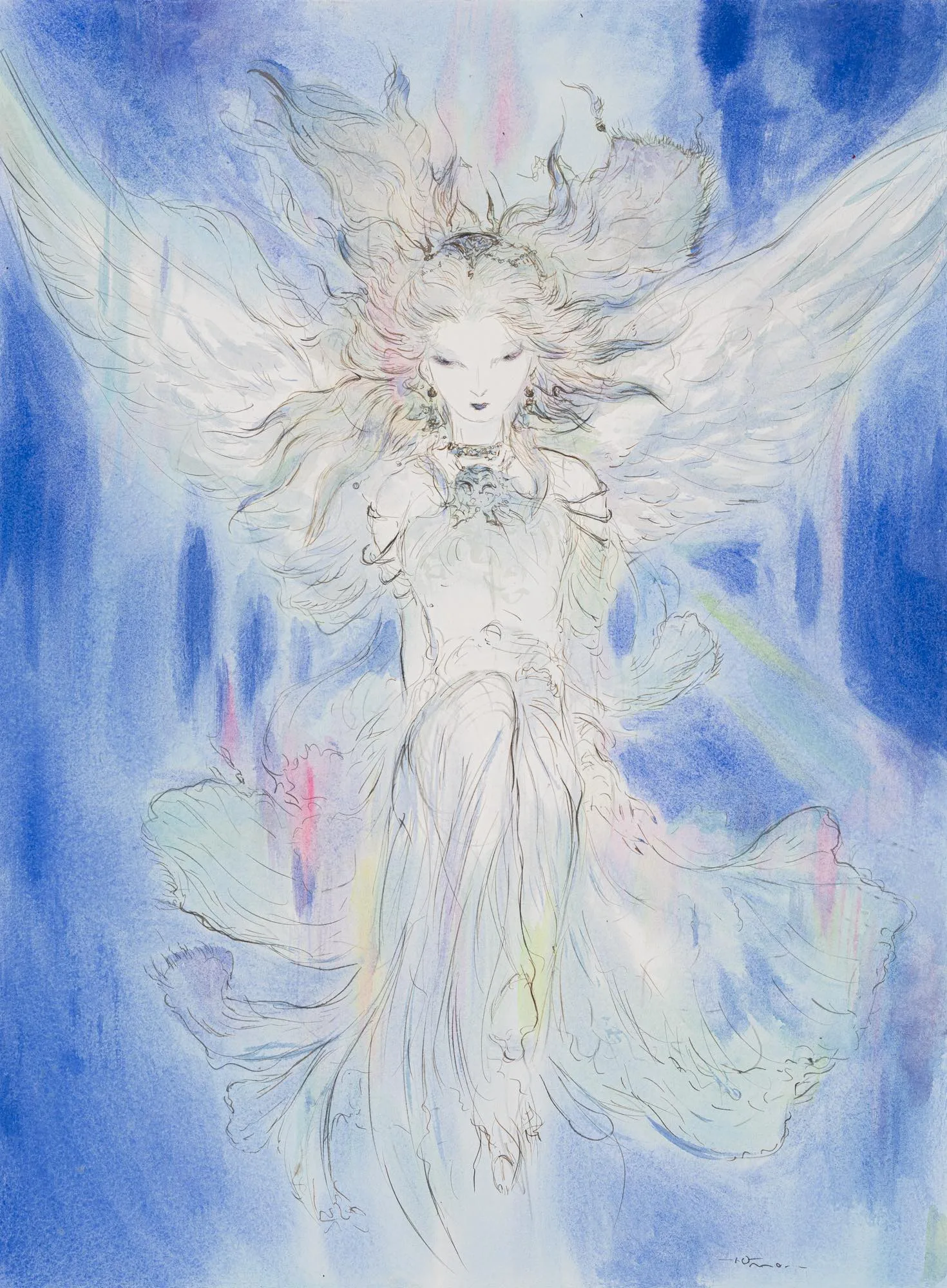
Lomex: Apocalypse (January 31 – March 15)
Wouldn’t it be nice to be a character in the world of Yoshitaka Amano? A static animation of technicolor, fae-like proportions, with all-knowing eyes (Apocalypse – Figure 9) or emanating delicate Birth of Venus-esque persuasions (Remembrance of Time)? Live out this fantasy at Lomex’s latest show across their 86 and 89 Walker Street locations. Forty works on paper from the titular 2013 Apocalypse series are present for viewing, with a catalogue of the works launching the gallery’s press. A triumph! Immerse yourself in Universe – a larger-than-life aluminum sheet that demands in-person viewing for its scale, as well as the narrative of gremlins, ghouls, characters, and animals intertwined in action across pale pinks, lightning-hot flashes of yellow and white, gaping maws of teeth, bulging heads of eyes, and a sense of indulgent chaos throughout. “These works are paintings of salvation,” the artist reflected in advance of the show. In further comments, he shared how the world has changed since the production of these works more than a decade ago, how the context for such works has shifted into a lane of mystery and uneasy horizons. While darker strains of visualization and death-oriented imagery do weave their way throughout the show, its the complication of the aforesaid works and their siblings – those featuring playful smiles, neon rays, and pensive glances – that build a relationship mimicking the highs and lows of the world around us, rather than just one perspective. As Amano aptly explained, “Are we really heading towards the end? No, we are certainly here now. Here in New York.”
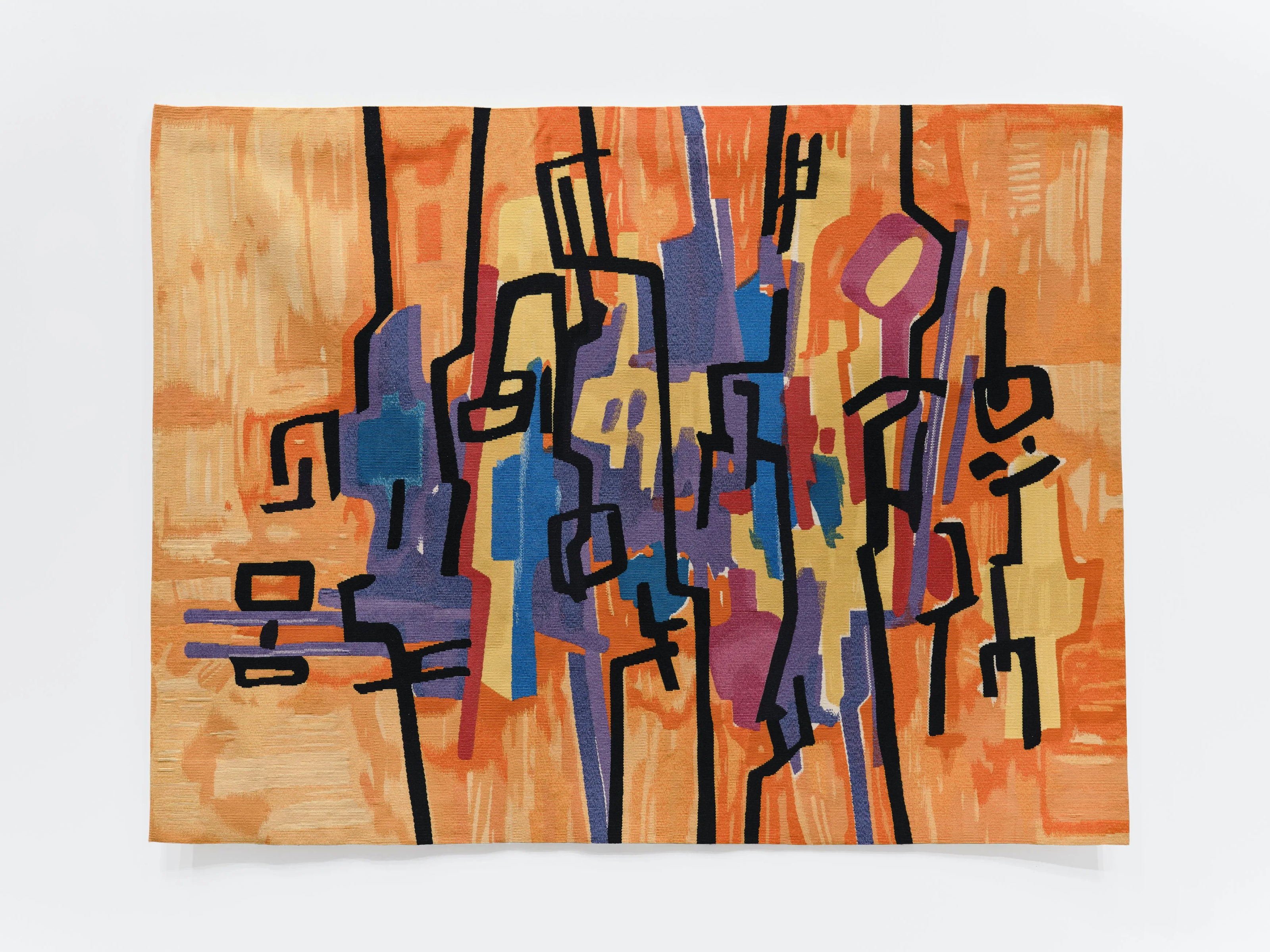
Industry Recommendation: See Saw Social Editor, Lauren Youngblood
White Cube: This Beautiful Light (January 22 – March 1)
This show is a burst of optimism and expression – it alone can pull you out of seasonal depression. Adnan’s personal background gives context to these works – born to a Greek mother and Syrian father, Adnan grew up in Lebanon, speaking French. She was a well-known writer for most of her life, and didn’t start painting until her mid-30s. For Adnan, painting became a liberating force, freeing her from the formal language constraints of her upbringing. As she put it, “I didn’t need to write in French anymore; I was going to paint in Arabic.” This freedom is apparent in “This Beautiful Light,” a collection of works from her last 20 years. One of the exhibition’s highlights is Adnan’s booklets, which feels like you’re reading her watercolors like a novel. Adnan’s vivid tapestries are another standout, which were created posthumously by her long-time partner Simone Fattal, using Adnan’s ‘60s colorful drawings as a starting point. Overall, this show is a heartfelt tribute to Adnan’s remarkable history, work, and enduring legacy. Her unique visual storytelling envelops viewers in a joyful, liberating experience that will leave you inspired and eager to explore more of her incredible work.
Written by Sam Falb
